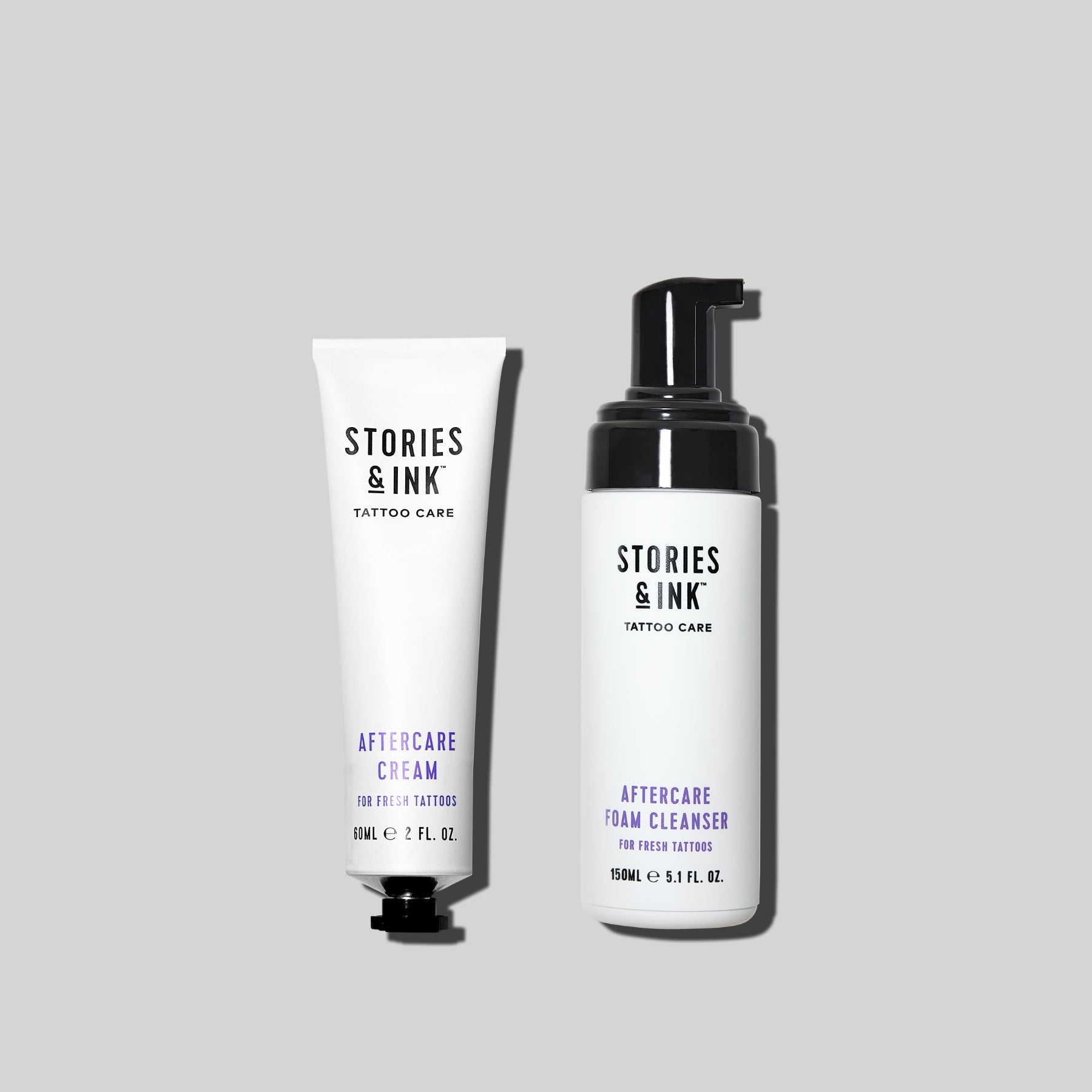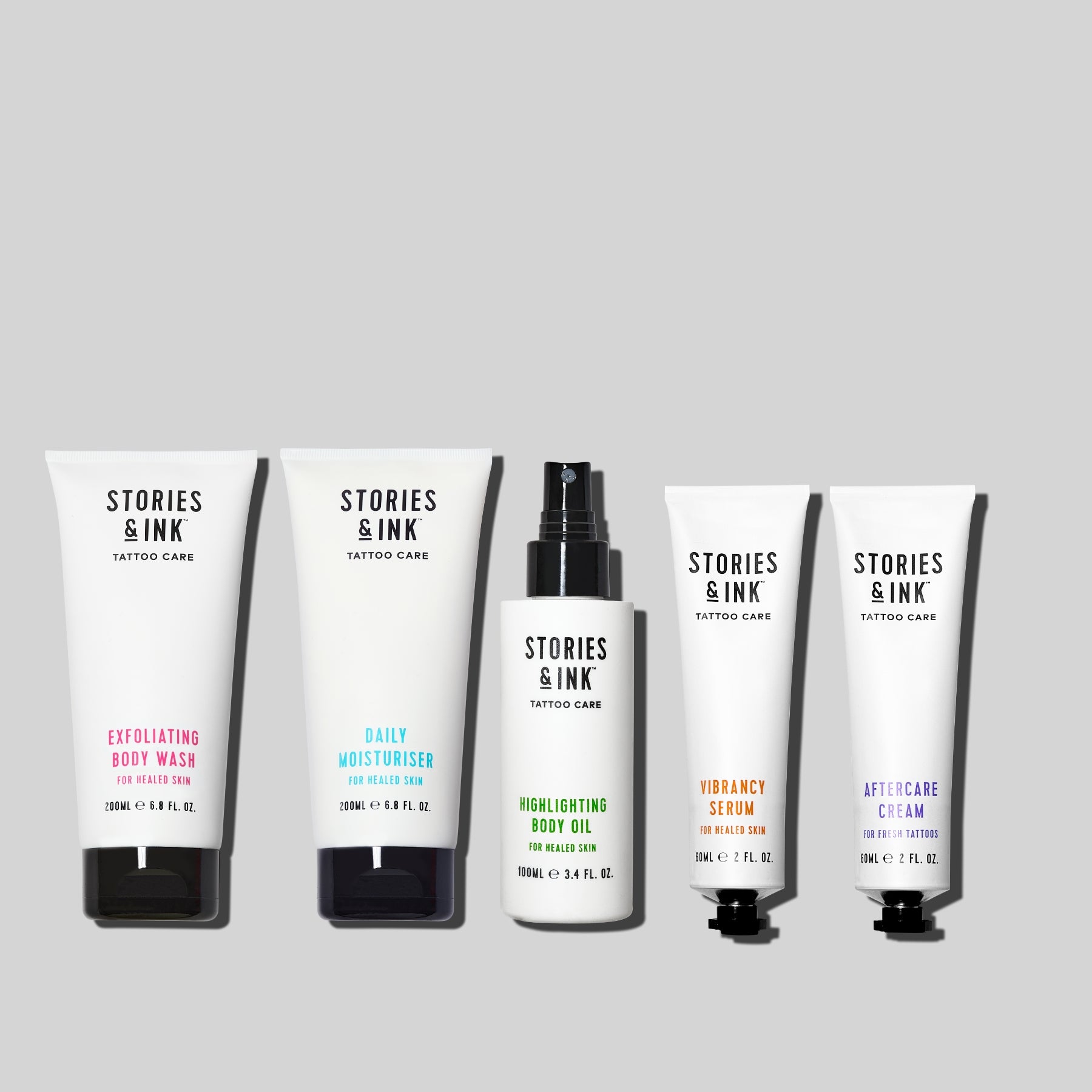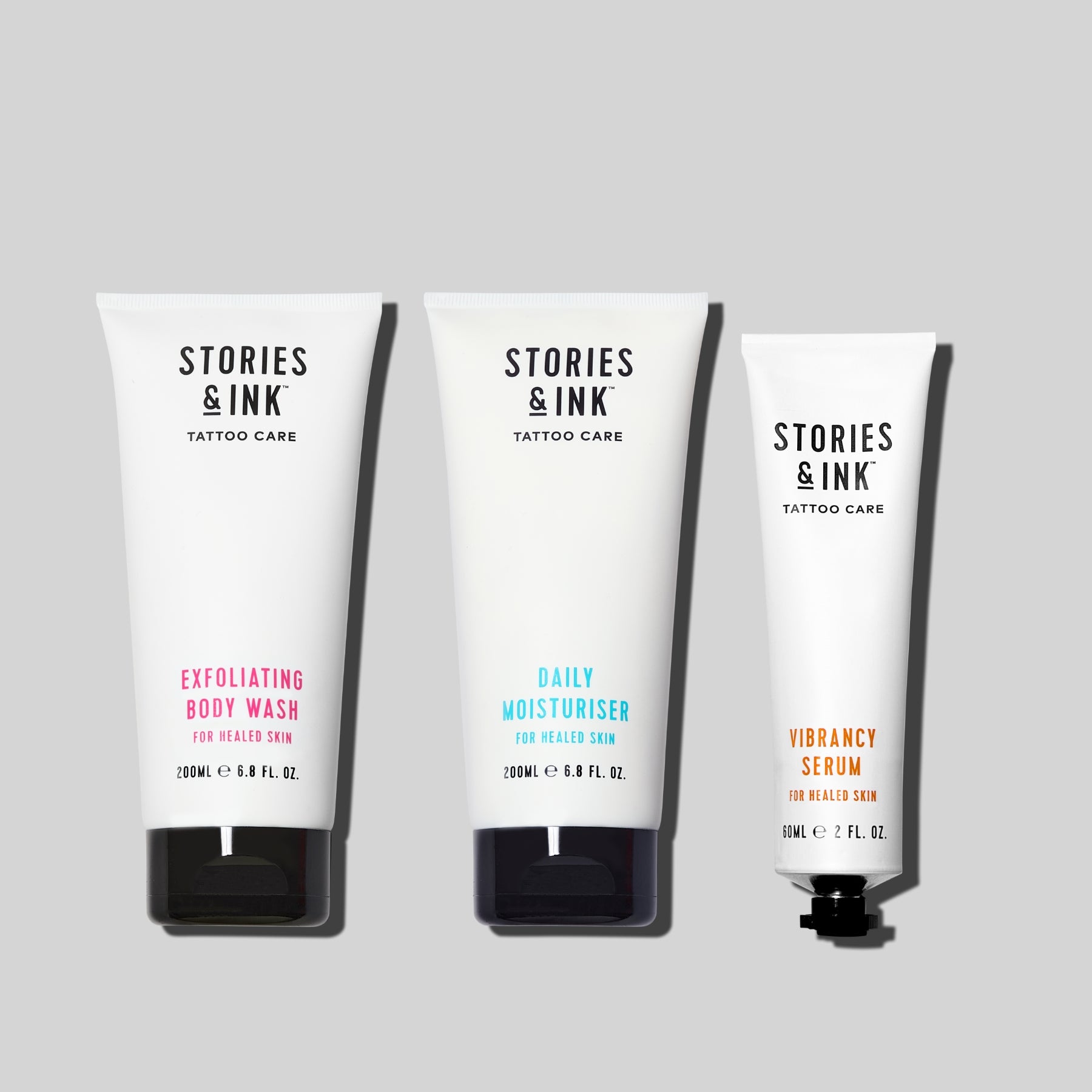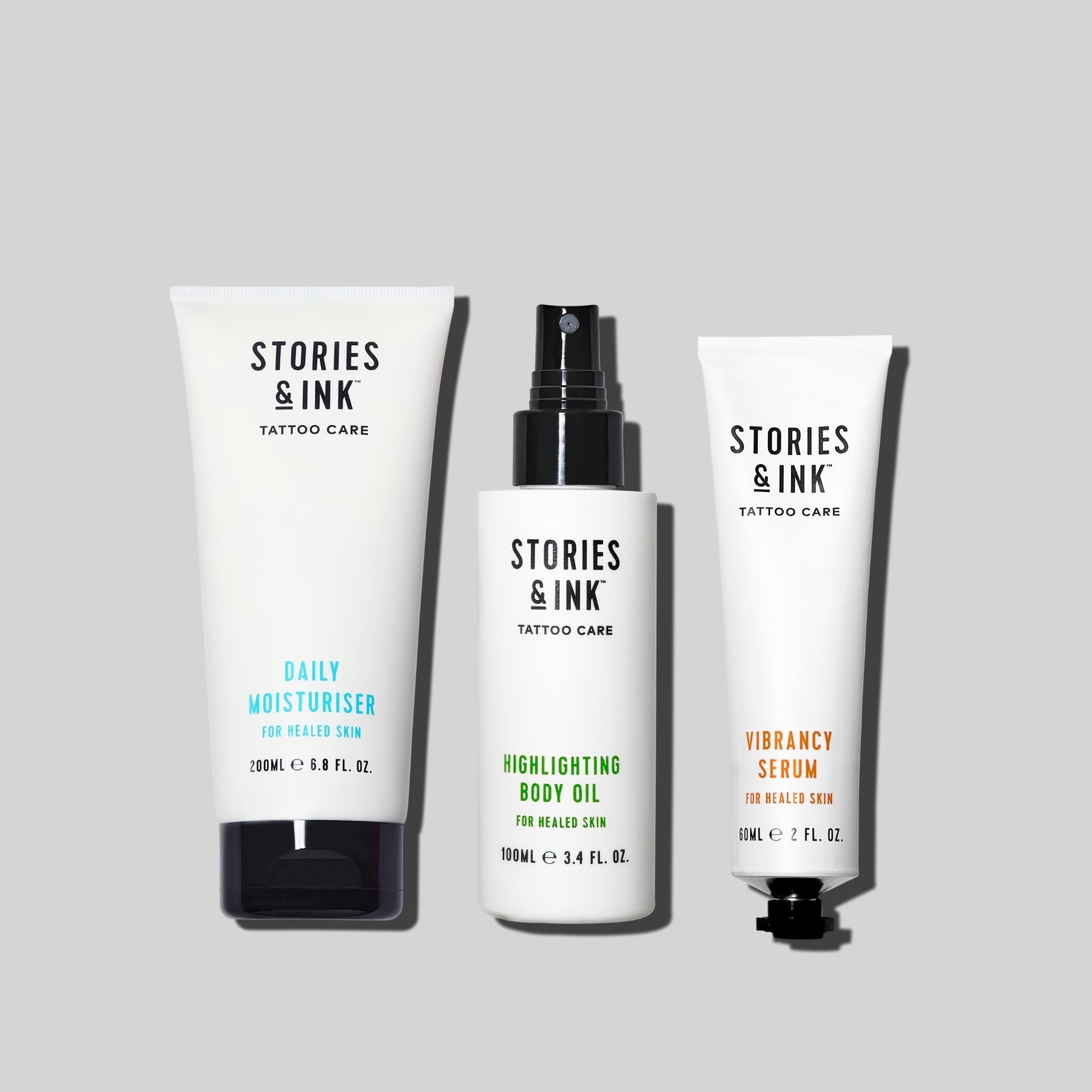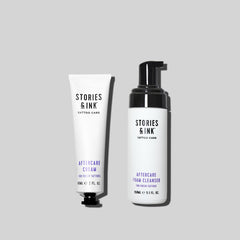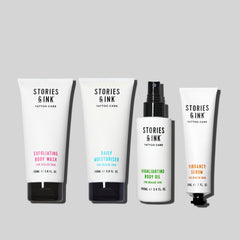Take control of your tattoo aftercare regime for delicate bits with our handy hints and advice.
Getting a tattoo is always going to hurt a little (okay, sometimes more than a little). And it’s natural to be a bit nervous about this fact, especially if it’s your first time. However, when it comes to choosing which area of your body to get inked, it’ll come as no surprise to hear that some areas are more sensitive than others.
Some of the most delicate areas to get tattooed include:
- Hands and fingers
- Feet and toes
- Head and face
- Rib cage and chest
- Armpits
- Stomach
- Neck and spine
If you’re thinking of getting a tattoo in one of these sensitive areas, read on to see what to expect. And, as experts in tattoo aftercare, we’ll tell you how to take care of your new ink once it’s done too.
How much does a tattoo hurt?
Let’s start with some (relatively) good news… Most of the pain people experience getting a tattoo tends to only last for as long as the session itself.
The bad news is that even small tattoos can take up to an hour (obviously larger ones take considerably longer). And it’s this prolonged period of irritation and tenderness that causes pain while getting a tattoo.

Getting a tattoo is said to be similar to having a sunburn, although it's different from one person to the next
In terms of what’s actually going on during the tattooing process, around 1/16th of an inch (1.6mm) of the needle enters the skin, delivering up to 3,000 punctures per minute. This means for an hour-long session you’re potentially looking at 180,000 individual punctures.
So, some pain is not surprising. But how much pain does getting a tattoo actually involve?
The simple answer is that getting a tattoo is similar to a sunburn, or maybe a thorny scratch. The not-so-simple answer is that there are a number of factors that influence pain from one person to the next.
These include:
- Age: Studies suggest you feel less pain getting tattooed as you get older. This is possibly due to parts of the brain that process pain decreasing with age.
- Sex: People who are biologically female tend to experience greater pain and have a lower pain threshold than people who are biologically male.
- Psychology: Anxiety or ‘catastrophising’ about the pain of getting tattooed can in some cases actually lead to a person experiencing greater pain.
Then there’s perhaps the most important factor; the body part getting tattooed. Generally, bonier parts of the body (including those with very little fat) hurt more. In contrast, areas with thicker skin and/or more fat hurt less.
Tattoo aftercare advice for more sensitive parts of the body
If you’ve got a particularly low pain threshold, you might pick an area of the body that’s less painful to get your tattoo. This includes the forearms, backs of the arms, shoulders, and outer thighs.
But most likely, you’re going to go ahead and get the tattoo anyway - especially if you’ve chosen a design to fit with the contours of your body.
With this in mind, here’s a few things to consider.
Tattoo aftercare for hand, finger and toe tattoos
Depending on the area of the hands or feet getting tattooed, a wound can heal completely differently. For example, the topside of the fingers, hands and feet are areas that tend to heal better.
However, parts of the hands and feet that have lots of joints and creases — such as the palm or underside of the feet - can be more of a problem.
Millie Webb is a resident artist at the award-winning Northampton-based studio, Fat Fugu Collective (@fatfugu).
"Hands are harder to heal as you’re using them constantly throughout the healing process,” Millie says. "The skin on your hands sheds at a faster rate due to regular use which can also affect the healing."

"Hands are harder to heal as you're using them constantly" - Tattoo artist Millie Webb
Due to these reasons, some tattoo artists won’t tattoo these areas at all, citing both the difficulties of tattooing and potential problems of the skin retaining the ink leading to lesser quality tattoos.
When it comes to aftercare for hand tattoos, Millie has the following advice.
"We recommend keeping the area clean and moisturised and avoid rings, watches and bracelets during this process if possible."
Tattoo aftercare for head and face tattoos
Firstly, Millie says, "Head and face tattoos must be carried out by an experienced artist due to the high-risk placement."
This is sound advice. Not only is it a highly visible part of your body to get tattooed (we don’t have to tell you that not all of society is down with the look), but your scalp is potentially more prone to bleeding. It’s also considered one of the more painful areas of your body to get a tattoo.
As for specific tattoo aftercare advice, Millie says, "We do recommend sun cream / SPF for the piece for the rest of its life in order to maintain its quality throughout the years."

SPF is always recommended for head tattoos
In addition to this, we’ll add that it’s worth watching out for ingredients in some face washes and moisturisers that may irritate or harm your tattoo, especially when it’s new. These include alcohol and fragrances, which can dry out and damage your skin. Or any heavy lotions and makeup that may clog your pores.
As for hair growth on your face or head, this should grow back as normal after getting a tattoo. Things such as dandruff or dry skin may tempt you into scratching or picking. However, avoid this temptation like the plague as it can bleed out the ink of your new tattoo.
And, once the tattoo has healed, use a fragrance-free, natural moisturiser on your face or a gentle anti-dandruff shampoo to keep your skin and scalp in top condition.
Tattoo aftercare for rib cage and chest tattoos
We’ve included the rib cage on the list as the skin here tends to be thin, while a lack of muscle or fat can up the ‘ouch’–factor when it comes to tattooing.
As for tattoo aftercare, the normal rules apply such as letting your tattoo breathe, keeping it moisturised and not scratching or picking at scabs. However, there are a few extra things to be aware of.

Chest tattoos tend to hurt more closer to the bone
You don’t want your clothes to rub against the new tattoo, so it’s best to wear loose clothing until it’s healed.
People that wear a bra should ensure it doesn’t rub the tattooed area too, removing it if necessary. And if your tattoo is on one side of your ribs, lie on the other side in bed.
With chest tattoos, they tend to hurt more closer to the chest bone you get where the skin is thinner. For this reason, you may want to start with a smaller tattoo in this area. You can always go back and get pieces added.
Tattoo aftercare for back tattoos
When it comes to taking care of back pieces, Millie says, "We always recommend a friend or partner to help with the healing process and aftercare.
"We also advise our clients shower to clean it at least twice a day and then get someone to help them apply moisturiser to the area as this can be difficult to manage themselves.
"You should wear loose clothing and it's adviseable for women to stay clear of tight-fitting clothes and bras throughout the healing process. This is to ensure there’s not clothing rubbing on the fresh tattoo."

Back tattoos: Asking a friend or partner to help with the tattoo aftercare may be a good idea
Tattoo aftercare for neck and spine tattoos
Loads of nerve endings; thinner skin; and close proximity to the bone: these are just three reasons why spine tattoos are up there in terms of the most painful.
But for many people this ‘badge of tattoo honour’ is often part of the appeal. And they can certainly look awesome too with the spine area lending itself to a range of beautiful and creative linear designs.

Aftercare is a key part of spine tattoos
Lengthy tattoo sessions for areas like this can often span over time, making aftercare in between sessions a key part of many spine tattoos. As mentioned above, you may need a hand applying aftercare creams on harder to reach areas like this.
For neck tattoos, one of the main issues in terms of aftercare is avoiding clothes with collars that rub. Garments with a lower-cut neckline are probably in order until it heals. Meanwhile, more frequent application of an aftercare cream or moisturiser may be required too considering the neck is likely to be exposed to the air.
Tattoo aftercare: FAQ
What to use for tattoo aftercare on sensitive areas?
For newly-inked tattoos we recommend using antibacterial soap to wash your tattoo, and applying a specialist tattoo aftercare cream while it heals. The Stories & Ink tattoo Aftercare Cream is a natural product that helps soothe, calm and repair damaged skin immediately after tattooing.
Stories & Ink's Aftercare Cream reduces inflammation while allowing your skin to breathe
How to apply tattoo aftercare to delicate body parts?
For new tattoos, apply our Aftercare Cream three times a day until your skin has healed: morning, midday and night. To avoid over moisturising, spread thinly. Once your tattoo has fully healed you can move on to our Daily Moisturiser. Simply take a small amount of cream and apply it slowly over the desired area.
Tattoo aftercare for sensitive areas: A checklist
- Antibacterial ointment: Applied by your artist after she’s finished her work
- Antibacterial, fragrance-free soap: For keeping new tattoos clean at home
- Soft, clean washcloth: For gently patting dry tattoos after washing
- Stories & Ink Aftercare Cream: For soothing and moisturising newly tattooed skin
- Loose clothing: For covering new tattoos without rubbing
- Stories & Ink Daily Moisturiser: For keeping fully healed tattoos hydrated
- Suncream (SPF 30+): For protecting your skin and prolonging the life of your tattoos
- Stories & Ink Vibrancy Serum: For bringing tired or faded tattoos back to life
Get more info and advice
So, there you go, now you know what’s what when it comes to tattoos for more sensitive parts of the body, it’s up to you to decide whether the pain is worth the gain (it probably is!). Happy healing everyone!
For more info and advice, read Tattoo healing: Here’s What to Expect After Getting Inked.
